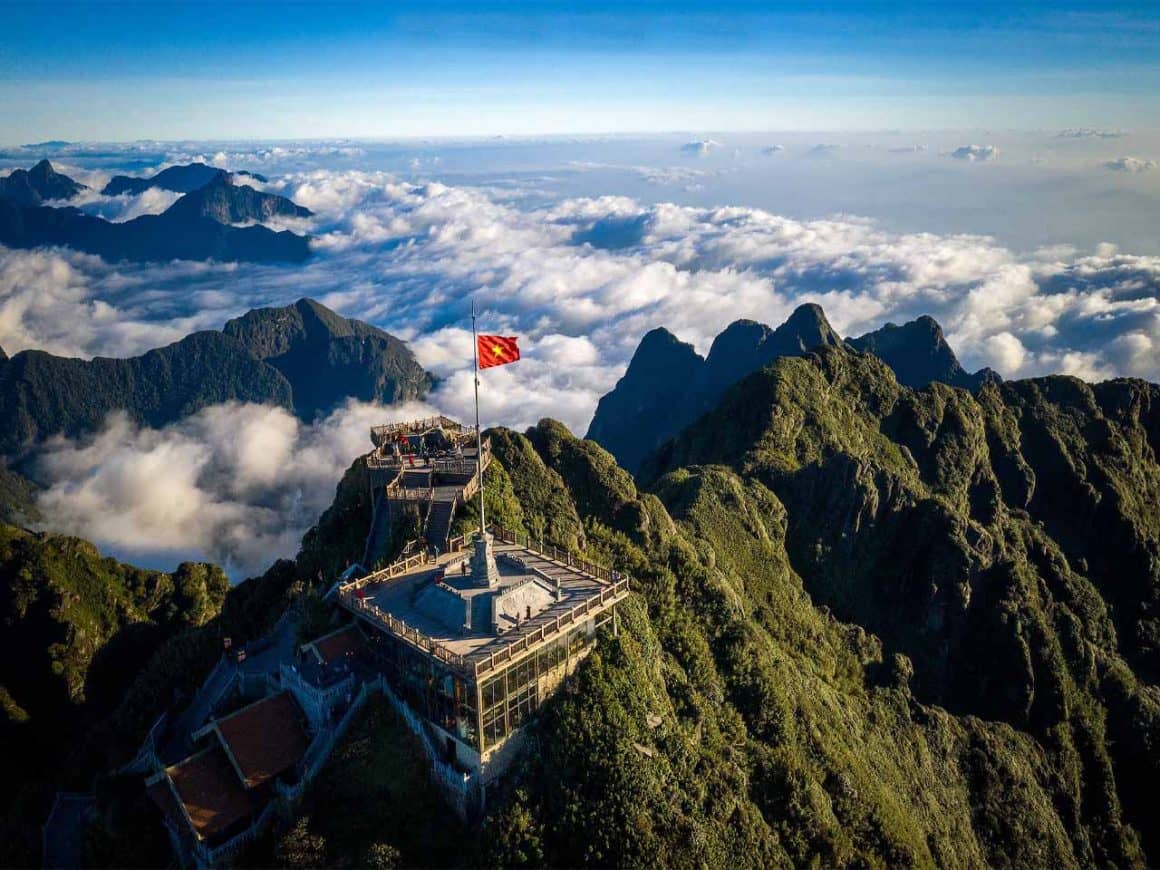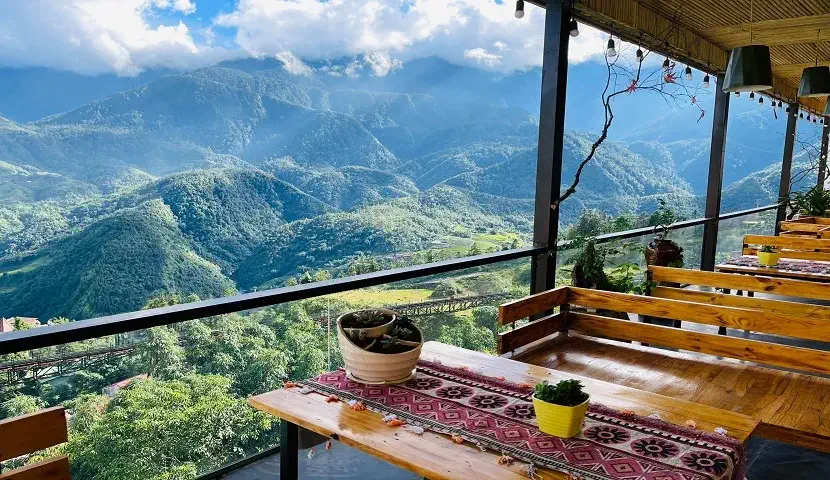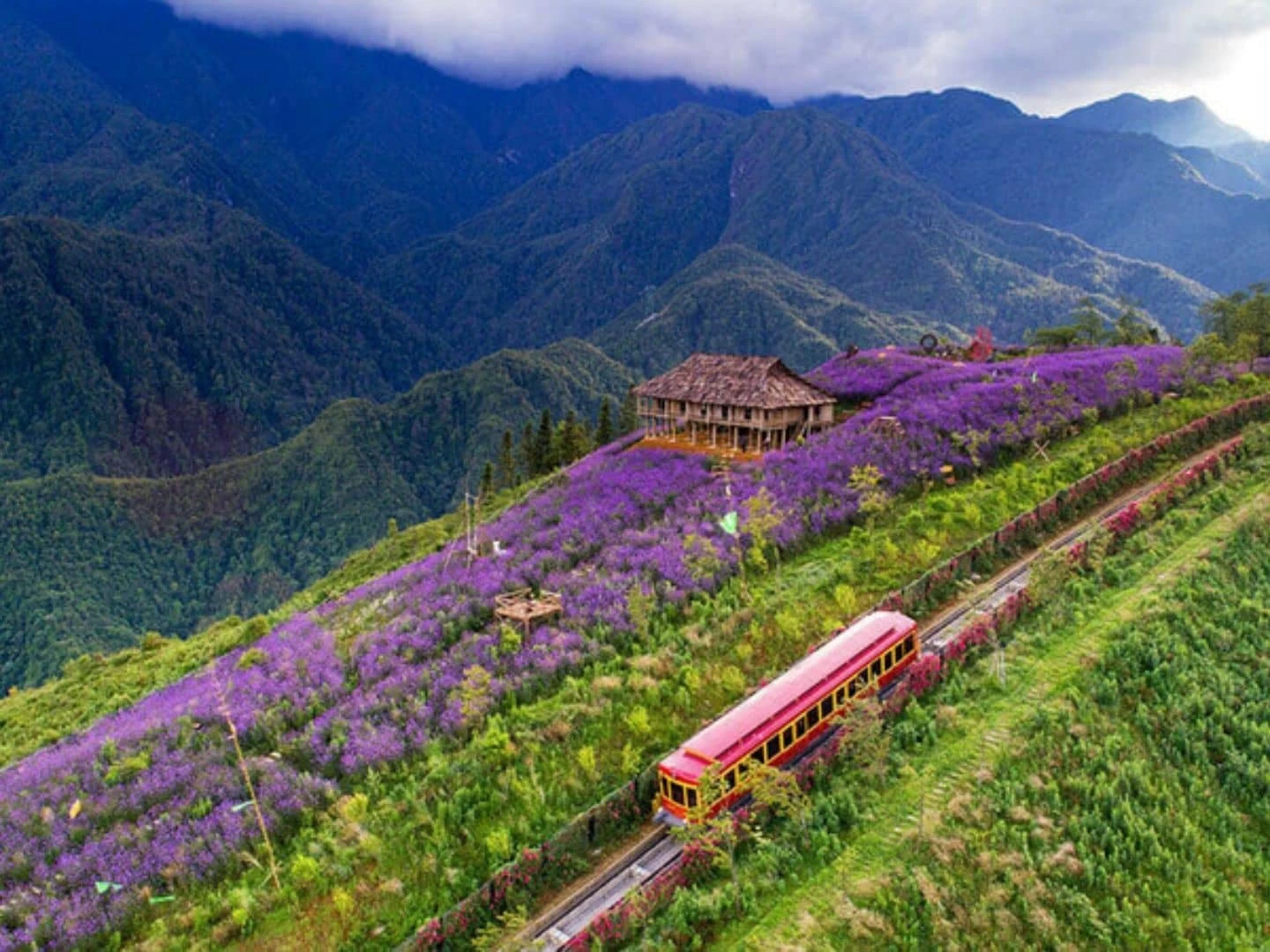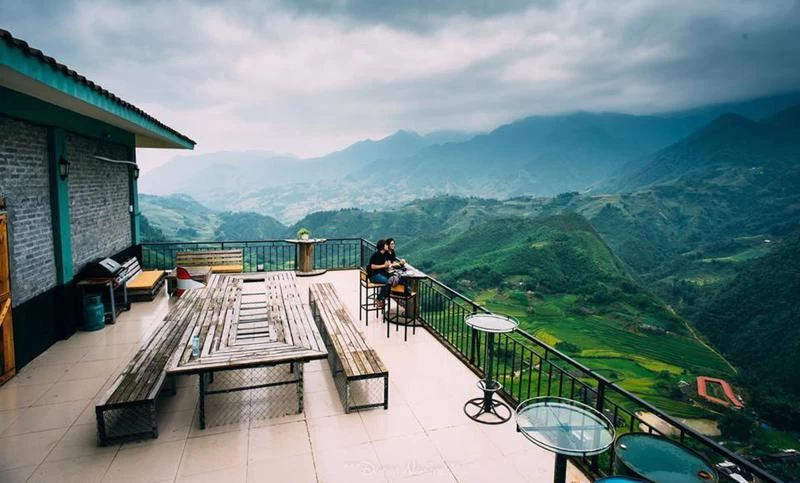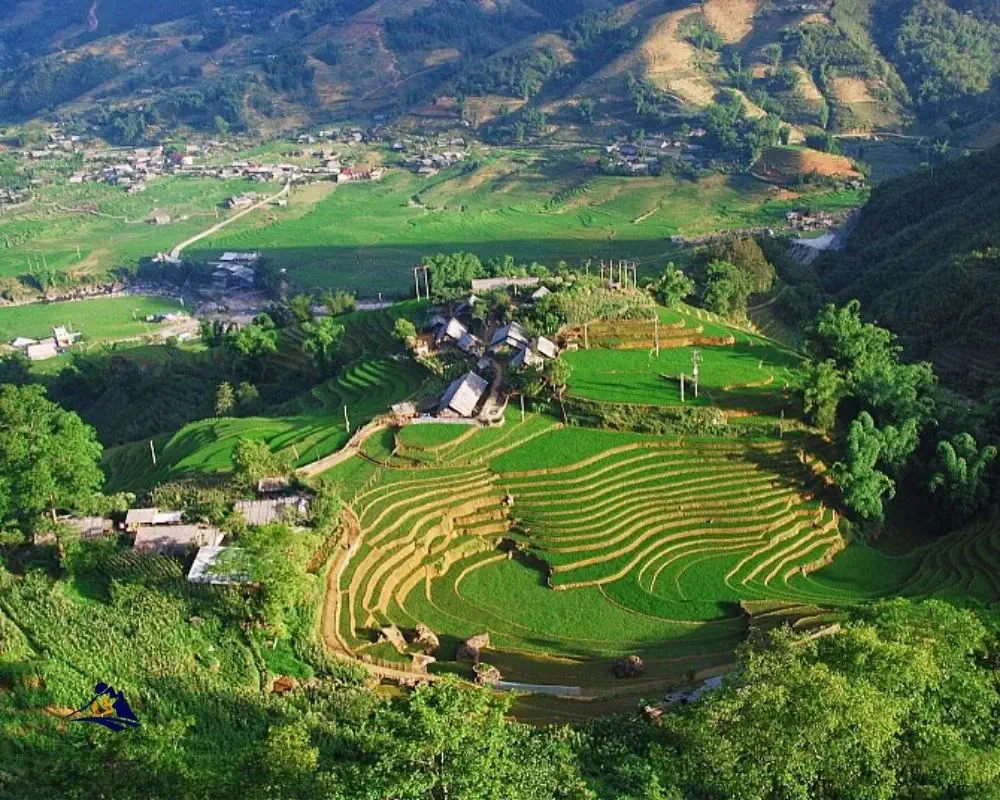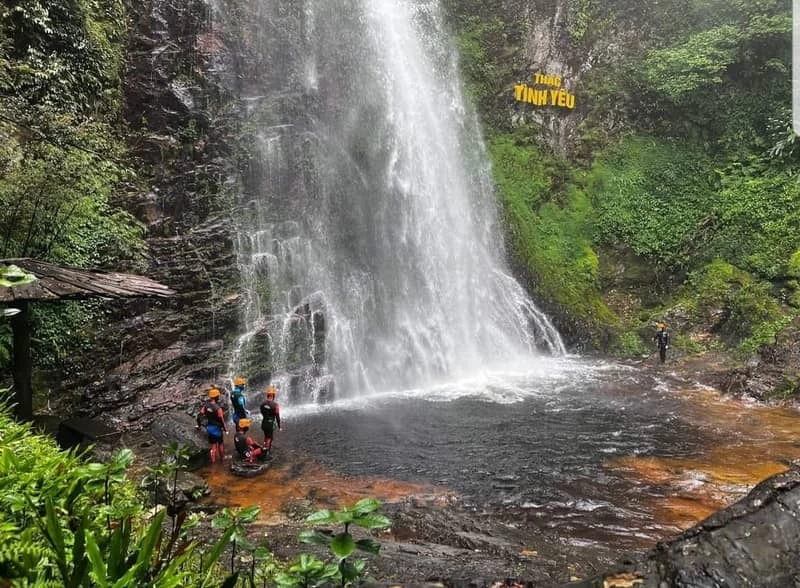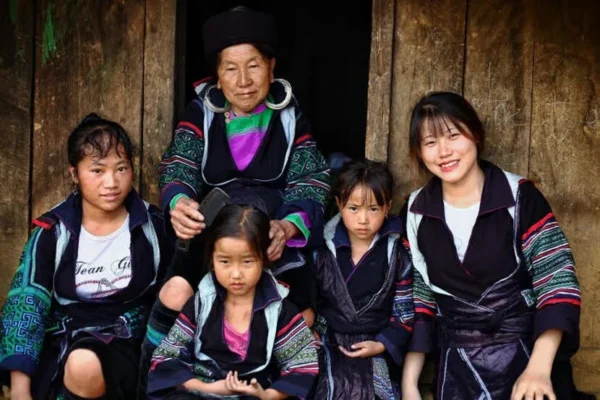
Discover the cultural characteristics of ethnic minorities in Sapa.
Discover the rich culture of the 5 main ethnic minorities in Sapa, famous for its traditional villages and unique customs. Learn about the H’Mong, Dao and other ethnic groups, along with their festivals, traditional costumes and must-see tourist activities. Plan your trip with Ula Travel to experience the unique culture and learn how to travel sustainably and respectfully to local cultures.
I. Introduction to Ethnic Minorites in Sapa
1. Overview of Sapa
Located at an altitude of 1600m above sea level, Sapa is hidden in the mist with majestic mountain ranges. This is the main living area of ethnic minorities. Among them, the H’Mong, Red Dao, Tay, Giay and Xa Pho ethnic groups have a large population. Each ethnic group brings to Sapa a unique cultural feature with strong national identity. Over the years of history, traditional customs have been preserved and promoted by the people.
Currently, in Sapa, the customs and practices of the indigenous people are very diverse, expressed in many aspects such as the system of festivals, traditional customs, traditional costumes, literature, traditional occupations… All have created a unique identity for this highland land.
2. The Speciality of Ethnic Minorities in Sapa
What makes Sapa special is the presence of ethnic minorities with diverse and unique cultures and customs. Each ethnic group here has its own traditions, customs, and cultural features, creating a diverse and rich cultural picture. From the colorful traditional costumes of the H’Mong to the ancient rituals of the Dao, each ethnic group brings visitors a rich and new cultural experience.
You will be like: Northern Vietnam Itinerary
II. Five Main Ethnic Minorities in Sapa
1. H’mong Ethnic Group
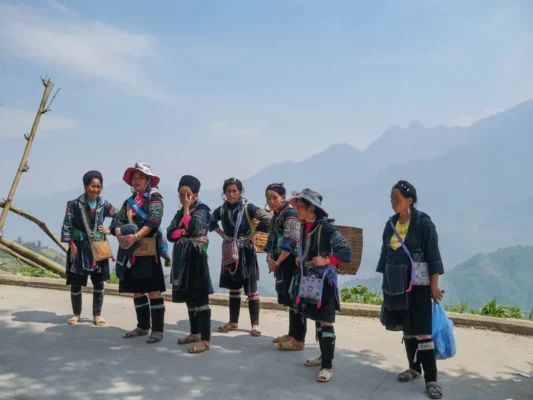
Black H’mong Ethnic Group in Sapa
The H’mong are one of the largest and most prominent ethnic minorities in Sapa. The H’mong people have a long history and are believed to have migrated to the mountainous regions of northern Vietnam from around the 18th – 19th centuries. This migration took place due to the pressures of conflict and the search for new lands to live.
The H’mong ethnic group is the largest ethnic group in Sapa today (50% of Sapa’s population, so you can often see the H’mong people when traveling to Sapa. Currently, the H’mong people make up a large number of villages in Sapa and are divided into many small groups such as Black H’mong, White H’mong, Flower H’mong, each group has its own culture and costumes.
Traditional Costumes:
- The costumes of the H’mong people are prominent and characterized by intricate hand-embroidered patterns. The Black Hmong, the most common group in Sapa, usually wear black or dark indigo clothing with brightly colored embroidery.
- Hmong women’s shirts usually have a standing collar, long sleeves and are decorated with prominent embroidered fabric strips. In addition, they also wear silver accessories such as necklaces, bracelets and belts to show their wealth and status in the community.
- For men, the costumes are often simpler but still imbued with traditional culture with indigo shirts and long pants. Hmong men often wear round, shallow hats that hug the top of the head, the hats are usually pure black or have a brocade embroidery ring.
Traditional Occupations:
- The Hmong mainly live on agriculture, especially growing upland rice, corn and medicinal plants. They are famous for their farming techniques on beautiful terraced fields, creating a majestic landscape in Sapa.
- In addition, weaving and embroidery are also important activities in the daily life of Hmong women. Their handicrafts such as handbags, robes and handkerchiefs are popular with tourists thanks to their quality and unique designs.
Traditional festivals:
- Traditional festivals of the Hmong such as the Gau Tao festival or the traditional Tet holiday are occasions for the community to gather, express gratitude to their ancestors and pray for a lucky new year and a bountiful harvest.
Learn more about: Northern Vietnam Wonders
2. Red Dao Ethnic Group
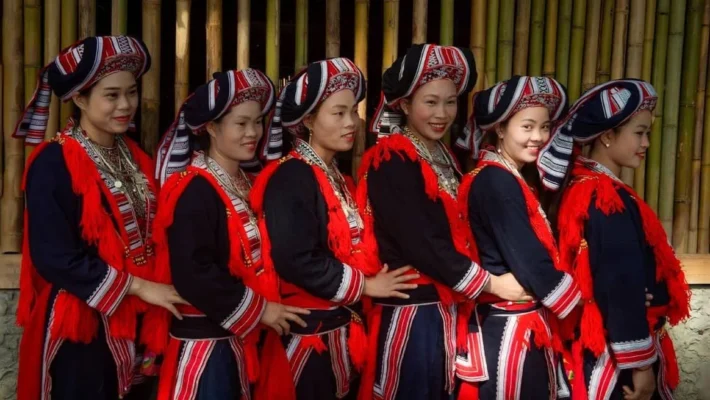
Red Dao Ethnic Group
The Red Dao ethnic group in Sapa are second only to the H’mong in population. The most populous place in Sapa is Ta Phin village. This village still preserves the cultural beauty and traditional customs of the Red Dao, so it also receives a lot of attention from tourists who come here to visit.
Traditional Costumes of the Red Dao:
- The traditional costume of the Red Dao is one of the most prominent features, easily recognizable thanks to its bright red color and sophisticated motifs. Red Dao women often wear a deep indigo ao dai, combined with a red head scarf meticulously hand-embroidered with geometric patterns. This scarf is often decorated with silver coins and tassels that create a jingling sound when moving.
- In addition, Red Dao women also wear long skirts with a red belt wrapped around the waist. The costume not only has aesthetic value but also shows the skill and meticulousness of women in weaving and embroidery. The delicate needlework on traditional costumes is the product of months, even years, of labor.
Traditional Occupations:
- The Red Dao have a long tradition of using natural herbs to make herbal medicine. They are famous for their special herbal bath recipes, which help restore health and cure diseases. These recipes combine many rare herbs picked from deep forests through elaborate processing. Herbal medicine is not only a cultural heritage but also an important source of livelihood for the Red Dao community.
Traditional Festivals:
- The Red Dao in Sapa are famous for their rich culture and unique traditional customs. In the Red Dao community, the Cap Sac festival (also known as the “Tu Cai” festival) is the most important event, affirming the maturity and position of men in the community. The Cap Sac festival not only marks a turning point in personal life but is also a religious ceremony, helping men receive recognition from their ancestors.
3. Tay Ethnic Group
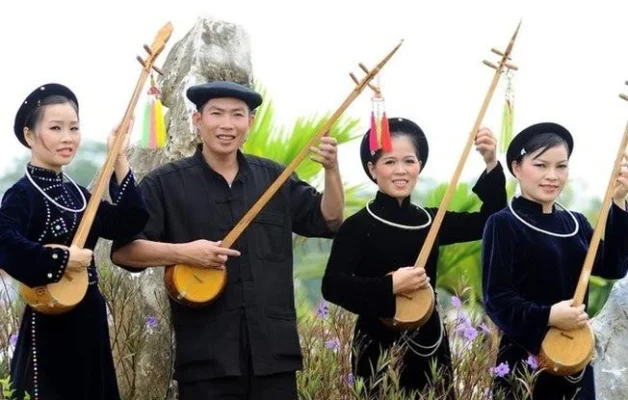
Tay Ethnic Group in Sapa
The Tay ethnic group is one of the largest ethnic minority groups in Vietnam and is also one of the earliest communities in the northern mountainous region. In Sapa, the Tay people are mainly concentrated in villages such as Ta Van, Su Pan, and Thanh Kim. The Tay people are famous for their long-standing, rich culture and strong community cohesion.
Traditional Costumes:
- The traditional costumes of the Tay people are often simple but sophisticated. Men often wear long indigo shirts with fabric or wooden buttons, accompanied by a headscarf. Tay women often wear long skirts, indigo blouses, or black or dark blue four-panel shirts. The highlight of the costumes is the sophisticated hand-embroidered patterns, demonstrating the ingenuity and talent of Tay women.
Traditional Occupations:
- The Tay people live mainly on agriculture, with the main activities being growing rice, corn, and raising cattle. The characteristic of Tay villages is large stilt houses, usually built of wood with thatched or tiled roofs.
- In addition, the Tay people are also famous for traditional crafts such as weaving, making conical hats, and weaving. Their handicrafts not only serve daily needs but are also popular with tourists as souvenirs.
Traditional Festival:
- The Tay people have many unique festivals and traditional customs. One of the biggest festivals is the Long Tong festival (going to the fields festival), which takes place at the beginning of the new year with the purpose of praying for a bountiful harvest and a peaceful life. During the festival, people will perform worship rituals and organize many folk games such as tug of war, throwing con, and singing then, a typical folk song of the Tay people.
4. Giay Ethnic Group
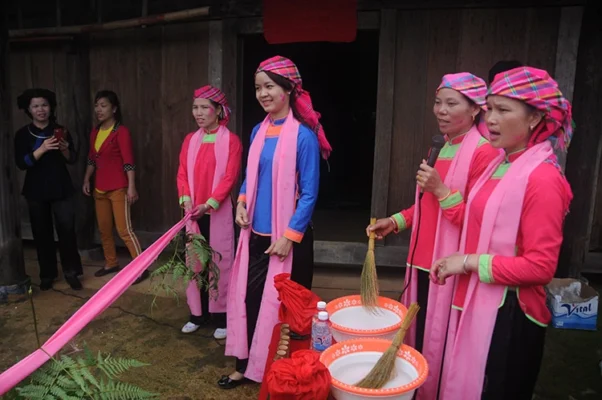
Giay Ethnic Group in Sapa
The Giay ethnic group in Sapa mainly concentrates in the villages around Ta Van Valley. This is a village that is frequently visited by many tourists when traveling to Sapa because of its unique cultural beauty combined with natural beauty.
Traditional Costumes:
- The Giay people’s costumes are not as elaborate as the Red Dao people’s but are very simple, with little embroidery and only colored cloth bands around the neck and hem of the shirt. The Giay people cook rice quite elaborately, usually boiling the rice until almost done, then putting it in a steamer to cook it completely, and drinking the rice water.
Traditional Occupations:
- The Giay people often live in the valley for the convenience of raising livestock and taking care of crops. In addition to growing rice, the Tay people often raise chickens, ducks, horses, and buffaloes to earn money for their families.
Traditional Festival:
- The biggest festival of the Giay people in Sapa is the Giong Pooc festival, which takes place in January every year with the wish to pray for a new year of bountiful crops, favorable weather, and a prosperous and happy life for the people. The Giay people have a rich treasure trove of literature, folk songs, and legends to explain natural phenomena. If you want to participate in the Giay festival, you can arrange your time to travel to Sapa at the beginning of the new year.
5. Xa Pho Ethnic Group
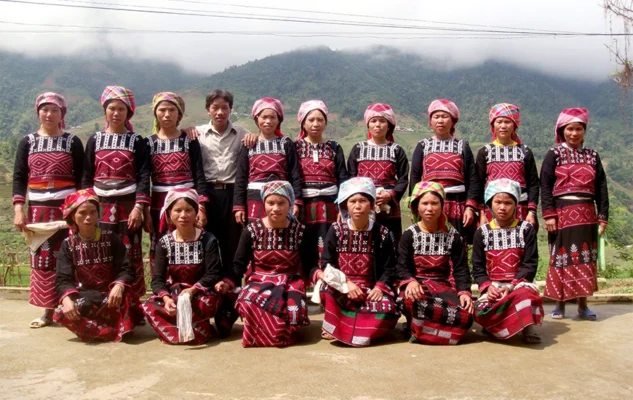
Xa Pho Ethnic Group in Sapa
The Xa Pho ethnic group (also known as Phu La) is one of the few ethnic minority groups living in the mountainous regions of Northern Vietnam, especially in Sapa, Lao Cai. With their own unique culture and identity, the Xa Pho people have been and are contributing an important part to the cultural diversity of Sapa.
The Xa Pho people originate from the Phu La ethnic group, mainly distributed in the northern mountainous provinces such as Lao Cai, Yen Bai and Ha Giang. In Sapa, the Xa Pho people often live in remote areas, with little interaction with the outside world, thanks to which they still retain many original cultural features.
Traditional Costumes:
- The traditional costumes of the Xa Pho people are simple in color but rich in culture. Xa Pho women wear long skirts, indigo shirts and dark scarves. The motifs on the costumes are often elaborately hand-embroidered, with delicate threads and patterns, reflecting their skillful craftsmanship.
Traditional Occupations:
- Agriculture: The Xa Pho people grow rice, corn and potatoes on terraced fields. In addition, they also grow some medicinal plants and wild vegetables for daily life and trade.
- Handicrafts: Weaving is a long-standing traditional craft of the Xa Pho people. Handicrafts such as scarves and brocade bags are meticulously crafted and are typical products that tourists can buy as souvenirs.
Traditional Festival:
- Festivals and Rituals: The Xa Pho people often organize important rituals such as the Forest God Worship Ceremony and the New Rice Celebration Ceremony. These rituals are deeply spiritual, praying for a bountiful harvest and protection from the gods.
Click here: Best homestays in Sapa
III. Visiting Ethnic Villages in Sapa
1. Cat Cat Village
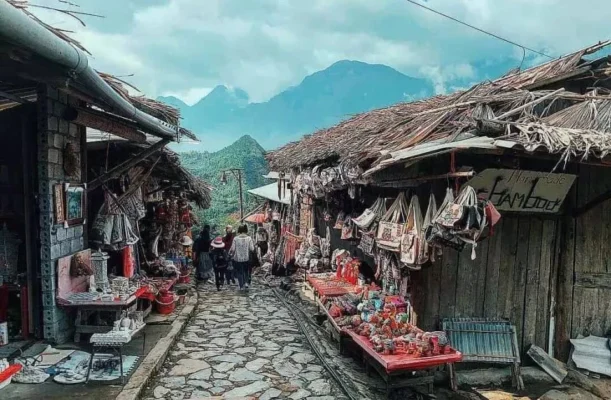
Cat Cat Village
Cat Cat Village is one of the most famous tourist destinations in Sapa today. This village is located at the foot of the majestic Hoang Lien Son mountain range, 5–6 hours by highway from Hanoi. If you start from Sapa town center, you only need to travel about 2 km to reach Cat Cat village.
Cat Cat Village is a precious gem of Sapa, attracting tourists with its majestic natural scenery and diverse culture of the H’Mong people. It is not difficult for you to come across the immense mountains and hills, sparkling waterfalls, and cool streams flowing through the village. The existence of hundreds of years of traditional H’Mong houses with wooden walls and roofs made of po mu wood has created a unique beauty and closeness to nature.
Start your journey with: Hanoi to Sapa Private Tour
2. Ta Van Village
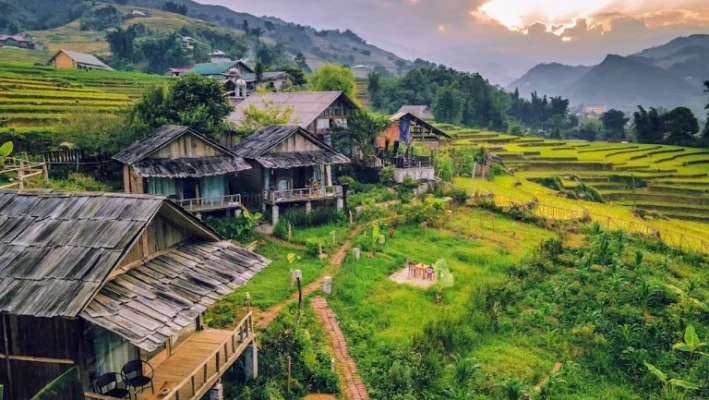
Ta Van Village
Ta Van village is located about 12 km from Sapa town. Thanks to the beautiful route to the village, Ta Van is always a place that many tourists add to their itinerary to visit if they have the opportunity to come to Sapa.
When you first set foot in Ta Van village, you will be overwhelmed by the green and majestic terraced hills, along with the wild mountain scenery. More special are the narrow, winding roads surrounding the village. This is a special and interesting beauty that you can explore.
Besides the peaceful scenery, there are extremely new check-in locations in the middle of the wild mountains and forests that will definitely bring you wonderful experiences and impressive impressions that will be engraved forever.
Do not miss: Sapa Tour from Hanoi 7 Days
3. Lao Chai Village
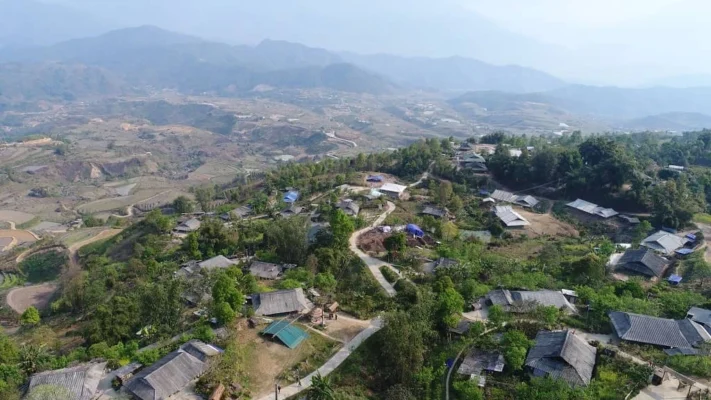
Lao Chai Village
Lao Chai Village is about 7 km southeast of Sa Pa town center. Lao Chai lies peacefully in a beautiful valley called Muong Hoa and is surrounded by the majestic Hoang Lien Son mountain range. If you are a lover of Vietnamese history, you will surely know that Lao Chai Village is home to two ethnic groups, the Giay and the Black H’Mong. As seen from above, Lao Chai Village is always crowded with typical houses of the ethnic people living here.
Lao Chai Village attracts tourists not only with its beautiful natural landscape but also with the unique culture of the H’Mong ethnic community. Traditional wooden houses, simple lives, and lifestyles in harmony with nature create a vivid picture of the rural life of the local people.
Are you looking for Sapa tours?
4. Ho Village
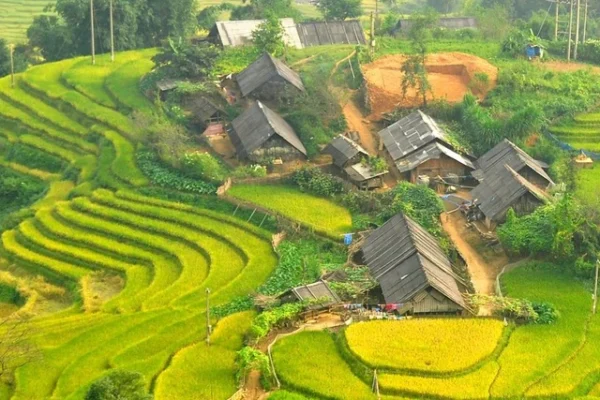
Ho Village
Ho Village is a very beautiful commune located in Sapa district, about 30 km from the center of Sapa town. Visitors who want to come here just need to go to the Southwest, following the trails nestled under the Hoang Lien Son mountain range to get there. Although quite far from the town center, the journey to Ban Ho will bring you many wonderful experiences.
The center of Ho Village is the meeting place of two gentle streams, La Ve and Muong Hoa. When coming to Ban Ho, you will admire the beauty of Ban Den village, the gentle and familiar Muong Hoa stream, and especially the cultural lifestyle and activities of the people living here (H’mong, Dao, Nung, and Giay, in which the majority of ethnic groups are Tay).
Visiting Ho Village, visitors can admire the traditional villages of the Tay people and learn about the lifestyle and living style of the residents in the village. Taking a walk around Ho Sapa village, visitors can visit the Tay ethnic people’s houses, discover how to weave brocade and sing and dance with them.
Do not miss: Best things to do in Sapa
IV. Travel Tips for Visitors
1. Best Time to Visit Sapa
- There are many times of the year when you can explore Sapa, but to fully experience the beauty of this place, March to May and September to November are the best times to visit Sapa. During this time, Sapa possesses a gentle beauty with mild air, warm sunlight during the day, and a cool climate in the evening.
- In particular, from March to May, you will see valleys of blooming flowers and fresh green vegetable fields. The weather during the day is very convenient for people and tourists to do many interesting activities. If you want to travel to Sapa, you can arrange your time during these months!
Learn more about: Sapa weather
2. Notes When Visiting Villages
The Sapa region is famous for the diverse colors of the highland ethnic villages, from Cat Cat village of the H’Mong people to Ta Phin village of the Red Dao people to Ta Van village of the Giay people… These tourist destinations are often visited by tourists, so the local residents here are very friendly and hospitable.
If you plan to explore more remote and pristine villages, you should learn about the customs and practices of that place in advance.It is best to find a local person to accompany and guide you throughout the journey. This will help you have more authentic experiences and respect for the culture and life of the local residents.
In conclusion, visitors coming to Sapa are not only attracted by the majestic and dreamy natural beauty but also love the cultural values and beauty of the people living in this mountainous and forested land of the Northwest, which are the ethnic minorities in Sapa. Visitors have the opportunity to participate in traditional activities, enjoy local cuisine, and learn more about the lives of local communities. To make your trip more meaningful, choose sustainable tourism, respect local culture, and support indigenous communities, thereby contributing to the preservation and promotion of Sapa’s unique cultural values.
See more: Sapa travel tips



